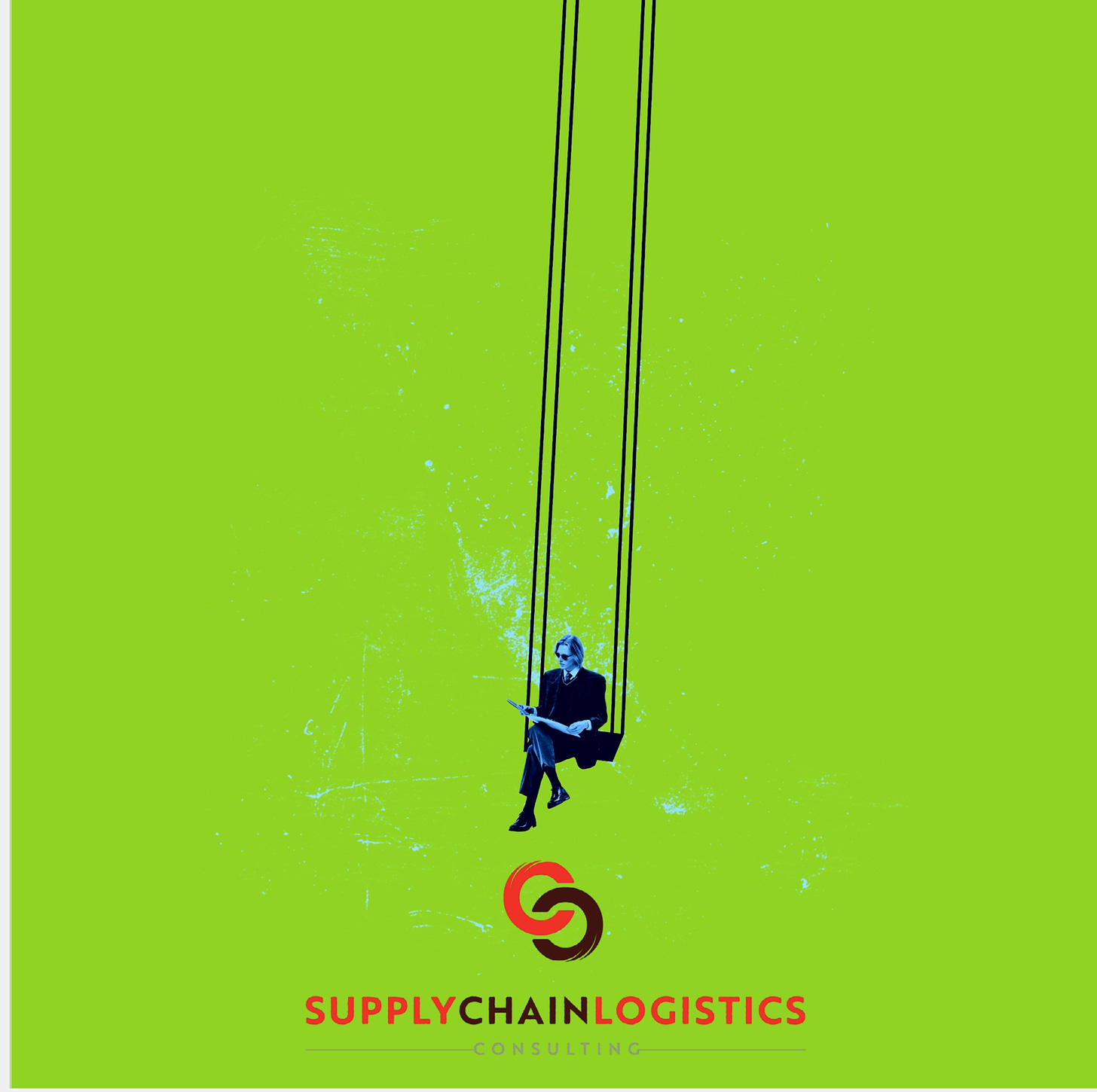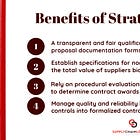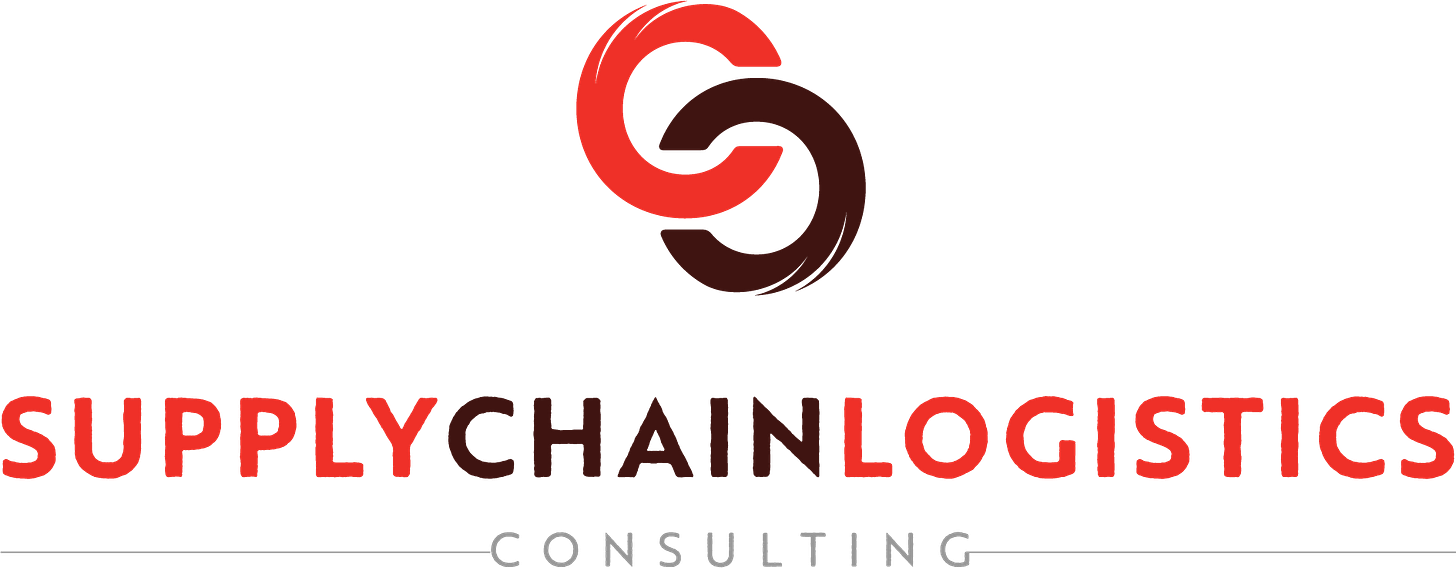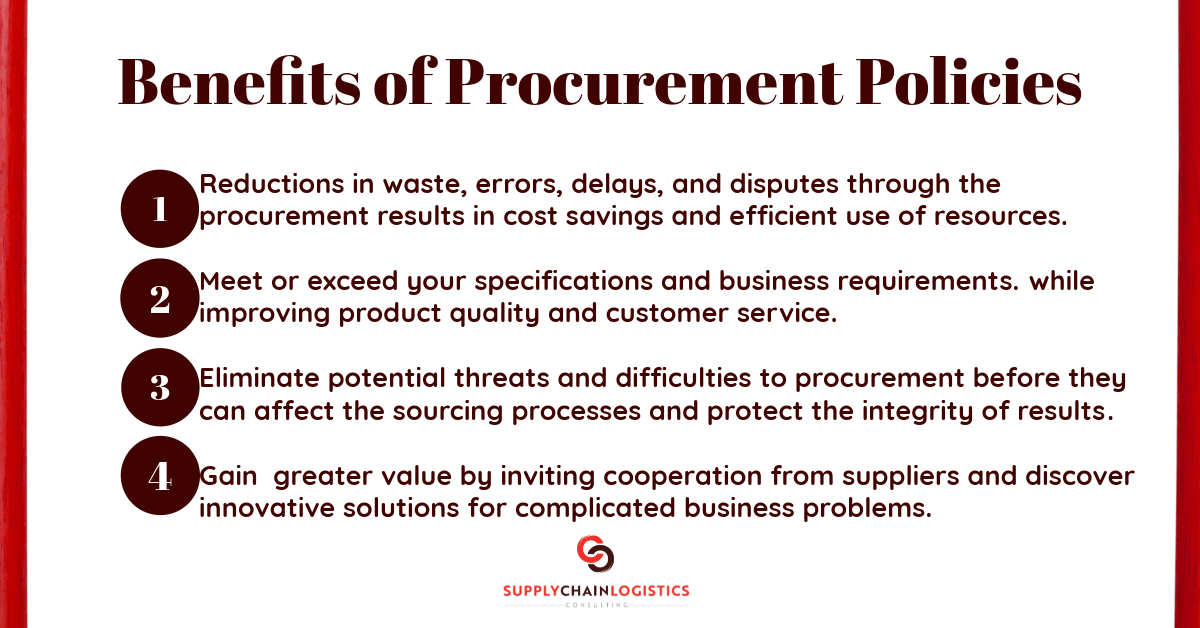Sourcing Methods: An Introduction
Understand Sourcing. A non-exhaustive list of various methods for procurement and when to employ them for maximum benefit.
Sourcing Methods
How to Choose the Best Sourcing Method for Your Business
Sourcing is the process of finding and selecting suppliers that provide the goods or services to meet a business requirement. Sourcing is a crucial part of procurement which will affect the quality, total cost, and delivery, of a company’s products and services.
There are many factors to consider, such as the complexity of project requirements, availability or capacity of established suppliers, market factors such as demand for a specific suppliers goods or services, and any of the risks involved with engaging a supplier.
It is imperative that purchasing managers understand common sourcing methods, that they know the advantages and disadvantages inherent in the use of each method, and that they can identify when a particular sourcing method or methods are appropriate to use for various scenarios.
Narrowing the Selections.
Before Selecting Your Sourcing Method

1. Identify Procurement Policy and Legal Requirements
Before you start looking for suppliers, it is important to have clarity of the businesses underlying objectives, to know the purpose of purchasing anything through a formal process, and to understand the procurement policies that are in place at an organization.
It is equally important to be familiar with whichever legislated regulations guide your company’s activities as there are various regulations depending on whether a company is a private or public entity, and these change depending on which industry a business operates within.
Questionnaire: Policy and Regulations
- Is your organization a public or private entity?
- What sector does your company operate within?
- Are there any special rules that govern your industry?
- What policy exists at your company for procurement activities?
- Are there spending limitations for amounts that will require pre-approval?
- Who is the authorized person for a procurement in your department?
- Does Federal or Provincial public procurement legislation apply?
2. Prepare for a Sourcing Project in Procurement
Use this questionnaire to help prepare for a procurement by evaluating current priorities, existing opportunities, and understanding any limitations for sourcing goods and services.
Questionnaire: Identifying Requirements
This will help you narrow down your options and choose a sourcing method that aligns with needs of the business unit while contributing to the businesses overarching objectives.
a) Is it essential for a project or business operations?
- Understand any urgency, internal risks and dependencies.
b) Does your company already have it in stock or on order?
- Understand the operational cost and complexity for this procurement.
c) Is there another area where this is being purchased on contract already?
- Understand the internal resources already available and find cost savings.
d) What are the specific technical specifications or criteria for the product or service?
- Understand scope for this procurement and clarify all ‘must-have’ vs. ‘nice-to-have’ requirements with the key stakeholders, include the subject matter expert(s).
e) What budget is allocated for the purchase and does a policy apply to this process?
- Understand if the estimated spending amount is subject to a procurement policy within the organization and follow established procedures related to the purchase.
3. Estimate the cost of your procurement.
When the project requires, collect research on the market prices for products or services required and ensure they are comparable to the estimates or budget if received elsewhere.
In many situations, the purchase request may arrive from a department with an estimate in place and already be pre-approved by a project manager, department manager, and/or have specific detail regarding anticipated costs and quality.
Establish a market research process for new procurement projects related to your industry and use this to validate cost estimates where needed. Benchmarking activities may uncover the true value and real total costs of a purchase prior to finalizing an estimate, drafting a budget, or seeking approvals from department managers if authorizations are needed for the spend amount.
Awareness of current market conditions, industry standards, and product research will help to;
- negotiate better pricing,
- discover and leverage corporate buying power,
- adhere to an allocated budget,
- obtain the best value per dollar spent,
- contain tailspend, and avoid project cost overruns.
3. Get all required approvals and authorizations.
Before you send out any requests for proposals (RFPs) or invitations for bids (IFBs), make sure you have the necessary funding to back up your project. You don’t want to waste time and resources on suppliers who won’t get paid.
a) Purchase Order Requests
b) Project Estimate Approvals
c) Purchase Order Allocations
d) Project Budget Validation
e) Spending Authorizations
When preparations are complete, review the different sourcing methods and evaluate their suitability for specific purchasing scenarios.
Sourcing Methods
Open tendering is a sourcing method that involves inviting any qualified supplier to bid for a contract. It is also known as competitive bidding or open solicitation.
The advantages of open tendering are:
- Encourages competition and transparency among suppliers.
- Allows new or emerging suppliers to participate and showcase their capabilities.
- Grants the contract to the lowest cost provider, which can save money for your business.
The disadvantages of open tendering are:
- Takes time and resources to evaluate all bids, which can delay the procurement process.
- May not be suitable for complex or large acquisitions, as it may compromise quality or innovation for price.
- Could create adversarial relationships with suppliers because they may feel pressured to lower their prices or standards.
Open tendering is best for scenarios where:
- You have simple and well-defined requirements that can be easily communicated and measured.
- You have a large pool of potential suppliers who can meet your requirements.
- You want to achieve the best value for money and minimize your procurement costs.
Restricted Tendering
Restricted tendering is a sourcing method that involves limiting the number of suppliers who can bid for a contract. It is also known as selective tendering or invitation to tender.
The advantages of restricted (“limited”) tendering are:
- Reduces the time and cost of evaluation, as you only deal with a few qualified and experienced suppliers.
- Ensures quality and reliability of suppliers, as you can pre-screen them based on your criteria and preferences.
- Allows more negotiation and clarification with suppliers, as you can have more interaction and feedback with them.
The disadvantages of restricted (“limited bidding”) tendering are:
- It reduces the level of competition and transparency among suppliers, which may limit your options and opportunities.
- It may exclude potential suppliers who are not on the invitation list, which may result in missing out on better offers or solutions.
- It may create bias or favoritism among suppliers, as they may feel privileged or entitled to win the contract.
Restricted tendering is best for scenarios where:
- You have complex or unclear requirements that need more discussion and customization with suppliers.
- You have a small pool of potential suppliers who have specialized skills or expertise that you need.
- You want to achieve the best quality and performance of goods or services and minimize your procurement risks.
Request for Proposal (RFP)
The advantages of RFP are:
- It allows suppliers to propose creative and customized solutions that meet your specific needs and challenges.
- It enables comparison of different proposals based on multiple criteria, such as price, quality, innovation, and sustainability.
- It facilitates dialogue and collaboration with suppliers, as you can ask questions, provide feedback, and negotiate terms.
The disadvantages of RFP are:
- It requires more time and effort to prepare and evaluate proposals, as you need to define your requirements clearly and review each proposal thoroughly.
- It may result in higher costs or risks due to uncertainty or changes in requirements, as you may not know exactly what you want or need at the beginning of the process.
- It may lead to disputes or conflicts over contract terms or scope, as there may be discrepancies or misunderstandings between your expectations and the supplier’s deliverables.
RFP is best for scenarios where:
- You have complex or unique requirements that need more exploration and innovation from suppliers.
- You have a limited pool of potential suppliers who have the capability and experience to handle your project.
- You want to achieve the best solution and value for your business and minimize your procurement risks.
Two-Stage Tendering
In it’s simplest form, the two-stage tendering offers the company more integration at the tendering stage with the contractors proposals. In various processes, the two stage bidding enables a formal split between components of the proposal such as technical and financial bids, or the pre-qualification based on meeting set criteria followed by the competitive process based on scores awarded for value indicators like price.
In two-stage bidding, there are variations in the process for submitting bids. This may be done at one time with the financial and technical components submitted simultaneously, opened sequentially depending on whether a bid has met the initial qualifications within the first round.
Likewise, the use of the two stage bidding process may provide opportunities for clarification and greater input of technical expertise by the contractors prior to the second phase of the process. In this manner, there is a higher likelihood that the proposal will have more accuracy pricing for risk and for designing a solution resembling the final the constructed project.
Two-stage tendering is a sourcing method that involves two rounds of bidding:
- The first phase identifies a shortlist of qualified, interested, and responsive suppliers.
- The second to stage or ‘phase’ will award the contract based on price and/or technical aspects.
This process is also known as pre-qualification tendering; or two-stage one envelope; or two-stage two-envelope tendering.
The advantages of two-stage tendering are:
- It combines the benefits of open and restricted tendering, as it allows competition and transparency in the first stage and quality and reliability in the second stage.
- It allows more flexibility and interaction with suppliers, as you can refine your requirements and specifications after the first stage.
- It reduces the number of bids to be evaluated in the second stage, as you only deal with a few shortlisted suppliers.
The disadvantages of two-stage tendering are:
A disadvantage is that this method increases the time and cost of the procurement process, as two rounds of bidding and evaluation are necessary.
Two-stage tendering may discourage some suppliers from participating in the first stage, because they may not be willing to invest time and resources without knowing their chances of being awarded the contract.
The risk of increasing costs and over-inflated prices rises exponentially with the appointment of the contractor following the award for financial competition when completed in round two. This is especially true given that the negotiating leverage or the company is lost without competition.
Two-stage tendering is best for scenarios where:
- You have large or complex projects that require extensive planning and coordination
 with suppliers.
with suppliers. - You have a moderate pool of potential suppliers who have varying levels of qualifications and experience.
- Companies require extensive control over the process and integration with interested suppliers to begin design of a technical solution. The two stage process provides opportunity to split bid submittal into two parts, acting more
Request for Quotation (RFQ)
Request for quotation (RFQ) is a sourcing method that involves requesting price quotes from potential suppliers for a project that has simple and well-defined requirements. It is also known as invitation to quote or request for bid.
The advantages of RFQ are:
- It simplifies and speeds up the procurement process, as you only need to compare prices from different suppliers.
- It minimizes the administrative burden and paperwork, as you only need to provide basic information about your project and requirements.
- It ensures accuracy and consistency of quotes, as you can specify the format and details of the quotes.
The disadvantages of RFQ are:
- It limits the scope for negotiation or innovation with suppliers, as you only focus on price as the main criterion.
- It may not reflect the quality or value of the goods or services, as you may not consider other factors such as delivery time, warranty, or customer service.
- It may not be suitable for complex or large projects, as you may not be able to define your requirements precisely or anticipate potential changes or issues.
RFQ is best for scenarios where:
- You have simple and standardized requirements that can be easily communicated and measured.
- You have a large pool of potential suppliers who can offer competitive prices for your project.
- You want to achieve the lowest cost possible and maximize your procurement savings.
Single-Source Procurement
Single-source procurement is a sourcing method that involves awarding a contract to one supplier without a competitive process such as tendering bids from other suppliers.
Single sourcing differs from sole sourcing in that there are available alternative suppliers that can fulfill the same requirement for goods and/or services. However, they not engaged prior to the contract being awarded.
Whereas sole-sourcing only occurs when there is no existing alternative to using one supplier for a given reason. Accepted reasons include low contract values, security and sensitivity of information in a procurement, or proprietary information and specialized knowledge of processes required for the project.
Examples of Sole Sourcing with justification may include:
A requirement for items that utilize proprietary software where no substitution exists and an alternative cannot be developed without significant cost, or loss of quality and capability.
A procurement project which includes a requisition that is sensitive in nature such as containing security related details for a corporation. Where placing an advertisement for solicitation of bids is not in the best interest of the organization.
Example of Single Sourcing
A purchase agreement whereby the supplier is awarded one-hundred percent of the business and will provide the purchaser with all they require of a specific product or service regardless of the total contract value.
Read more on single – vs. sole sourcing:
Comparing Single to Sole Sourcing
Conclusion
The key to successful sourcing is to understand the requirements and business objectives for the project, to gain an understanding of the market and qualifications for suppliers, then evaluate which approach is best to achieve the desired result.
By evaluating which approach to take before a procurement managers understand the benefits or difficulties behind each method and can select the best sourcing process for their requirement.
Avoid unnecessary risk and ensure successful contracting with an available and reliable supplier that will provide the goods or services for the greatest possible value.
Related Reading:
SCLCI Back-to-Basics: “The Benefits of Strategic Sourcing”

Formatting, research, and document structure, were completed with assistance from digital AI software.
At Supply Chain Logistics Consulting our mandate is to improve the way things are done and we would be happy to hear from you. Do you have a specific problem you are solving? A unique solution or a successful story about making a significant change?
Let us know.
Write your response in the comments or send us a message on our contact page. If we get enough responses, we will be highlighting our favorite examples in featured posts so that our readers can benefit from them as well.
If you are interested in hiring a management consultant for your business or project and want to learn more about our management consulting services, please contact us today. We are a professional management consulting firm with years of experience in helping people at businesses like yours to achieve results.
Visit and Subscribe on all our channels.
🌐
📩Company
𝕏 Connect
🔖 Join LinkedIn
✅ WhatsApp ☎
👉 And don’t forget to share this Early Edition channel.






3 comments
temp mail
3 February 2024 at 12:21 pm
While I typically refrain from reading blog articles, I must express my strong interest in this particular post and urge you to do so. Your writing style has truly impressed me. Thank you for sharing this wonderful article.
Supply Chain Logistics Consulting
18 February 2024 at 12:50 pm
Thank you for your comment and it’s great that you liked it. Don’t forget to Like, Share and Comment on social media as well. Readers that sign up for the Newsletter get a monthly summary of these Editions delivered by email. Send your questions about our consulting services, how to sponsor an article, or become an affiliate, to Contact Us. We look forward to hearing from you!
LS
11 February 2024 at 1:41 pm
I luckily stumbled upon this brilliant site earlier this week, they provide great info for members. The site owner excels at informing the community. I’m impressed and hope they continue their magnificent service.
Comments are closed.